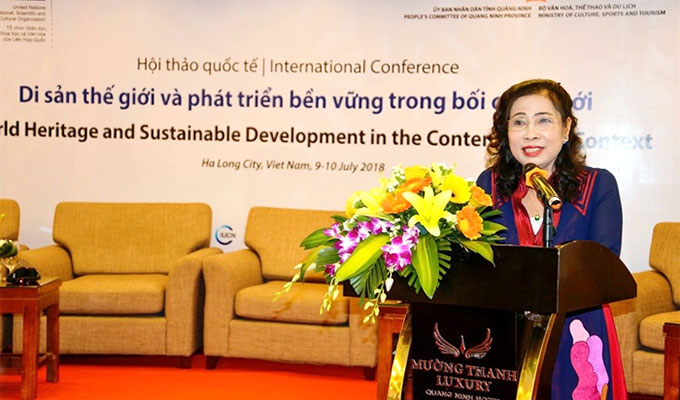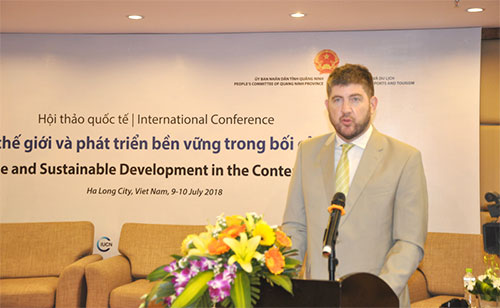(TITC) - The Ministry of Culture, Sports and Tourism (MOCST) and the UN Educational, Scientific and Cultural Organization (UNESCO) co-organized international conference on world heritages and sustainable development in the contemporary context (Ha Long, 9-10 July 2018).

“Viet Nam has eight UNESCO-recognized heritage sites, including five cultural, two natural and one mixed ones. Over the past years, Viet Nam’s government has paid due attention to protecting and restoring global values as well as managing, protecting and promoting the values of heritage. The acknowledges and presents of delegates at the event will be an importance channel for the government to evaluate the results and propose solutions to preserve heritage sites and sustainable development in the new context”, said MOCST Deputy Minister Dang Thi Bich Lien opening the event.
Addressing the conference, Vice Chairwoman of Quang Ninh People’s Community Vu Thi Thu Thuy shared that, Quang Ninh Province has collaborated with international organizations to implement projects to promote green development, technology cooperation in Ha Long Bay environment protection, thus promoting the value of heritage, spreading the benefit for community, contributing significantly to the socio-economic development of province.
Michael Croft, UNESCO Chief Representative in Viet Nam, said that the conference serves as a forum to find out a sustainable solution that both meets development requirements and preserves the values of world heritage properties.
Today, in addition to the inherent values of humanity, world heritage is an important asset for sustainable development, directly linked to economic growth, social stability and environmental sustainability. A sustainable way of addressing concerns for development, meeting the requirements of preserving and promoting the values of the world heritage, he added.

The two-day conference focused on topics such as the strengthening of legal framework to protect heritage and boost sustainable development, cohesion of local communities, and public-private partnership at world heritage sites. Participants provided recommendations on practical measures to enhance the protection and promotion of world heritage towards sustainable development.
The UNESCO world heritage sites in Viet Nam include Ha Long Bay (1994, 2000), Phong Nha-Ke Bang National Park (2003, 2015), Complex of Hue Monuments (1993), Hoi An Ancient Town (1999), My Son Sanctuary (1999), Central Sector of the Imperial Citadel of Thang Long – Ha Noi (2010), Citadel of the Ho Dynasty (2011), and Trang An Landscape Complex (2014).
Hong Thanh